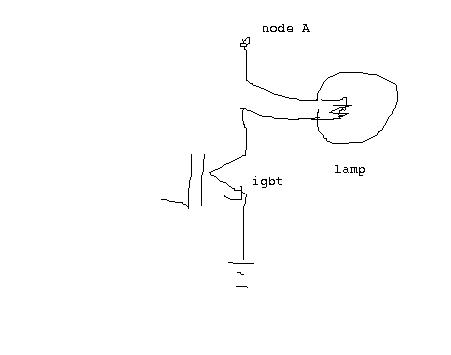DSNet
Newbie level 5

boost converter circuit
Objective: To build a boost converter that can convert 12VDC to 200VDC.
Problem: The output voltage trails off around 16-20VDC depending on the frequency I use.
Details: First off, I'm using the technical notes mentioned here in order to build this.
I'm using a modded computer ATX PSU to provide 5VDC and 12VDC. I checked the output voltage of the 12V and 5V pins with an oscilloscope when the boost converter is running and I'm pretty sure that the PSU is powerful enough.
The PWM is generated using a PIC18F2525 and fed into a MOSFET driver in order to amplify the signal. After that, it is fed into the gate of an IGBT.
I've tried multiple frequencies varying from 5kHz to 100kHz with duty cycles from 30% to 70% to no avail.
I've noticed that for a boost converter, there is almost no waste heat output. Only after a couple minutes of operation can I actually notice that the IGBT and MOSFET driver are actually getting a little bit warm.

The circuit I'm using. I didn't bother drawing all the necessary components connected to the PIC MCU. I'm 100% sure the MCU is functioning as it needs to.

A screen capture of the oscilloscope. The yellow signal is the waveform of the PWM running at 100kHz with 70% duty cycle. The blue signal is the waveform of the voltage at Node A shown in the schematic above.
Any help appreciated, thanks in advance!
Objective: To build a boost converter that can convert 12VDC to 200VDC.
Problem: The output voltage trails off around 16-20VDC depending on the frequency I use.
Details: First off, I'm using the technical notes mentioned here in order to build this.
I'm using a modded computer ATX PSU to provide 5VDC and 12VDC. I checked the output voltage of the 12V and 5V pins with an oscilloscope when the boost converter is running and I'm pretty sure that the PSU is powerful enough.
The PWM is generated using a PIC18F2525 and fed into a MOSFET driver in order to amplify the signal. After that, it is fed into the gate of an IGBT.
I've tried multiple frequencies varying from 5kHz to 100kHz with duty cycles from 30% to 70% to no avail.
I've noticed that for a boost converter, there is almost no waste heat output. Only after a couple minutes of operation can I actually notice that the IGBT and MOSFET driver are actually getting a little bit warm.

The circuit I'm using. I didn't bother drawing all the necessary components connected to the PIC MCU. I'm 100% sure the MCU is functioning as it needs to.

A screen capture of the oscilloscope. The yellow signal is the waveform of the PWM running at 100kHz with 70% duty cycle. The blue signal is the waveform of the voltage at Node A shown in the schematic above.
Any help appreciated, thanks in advance!






